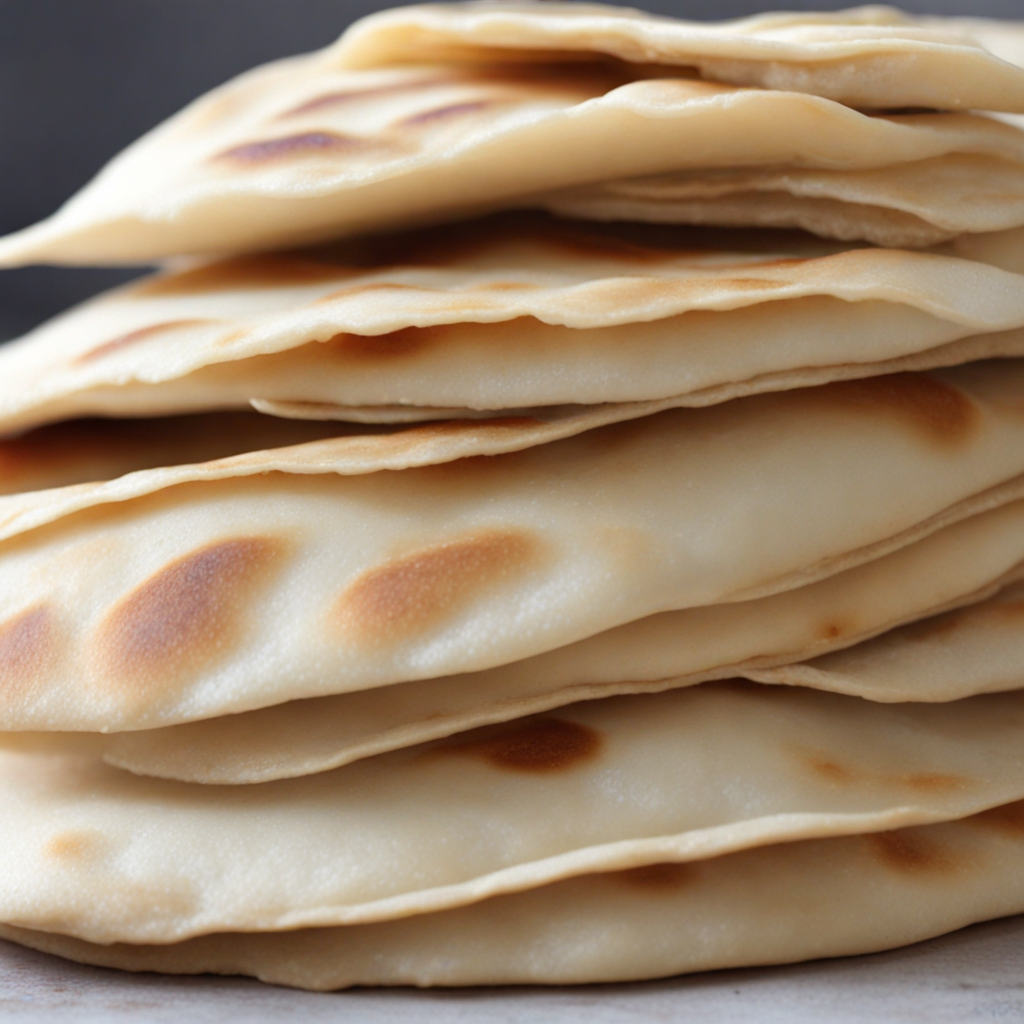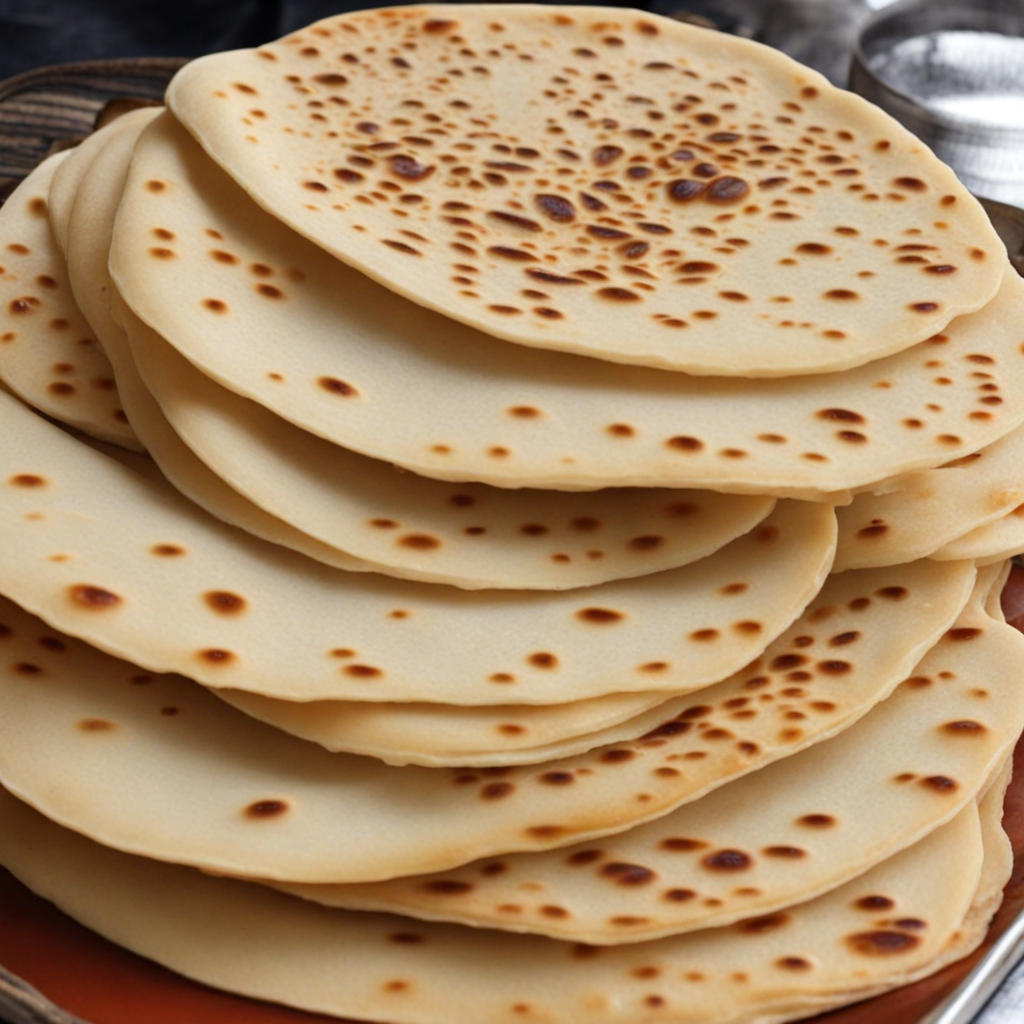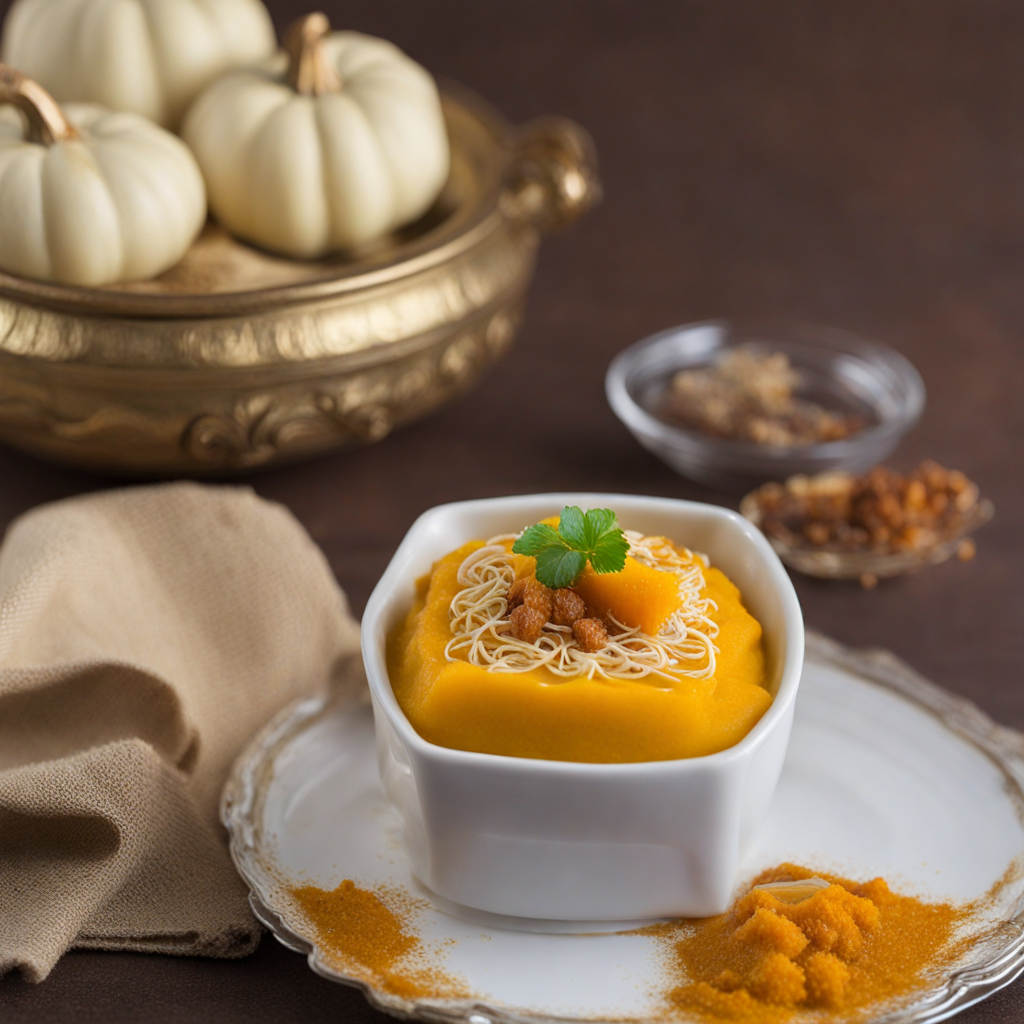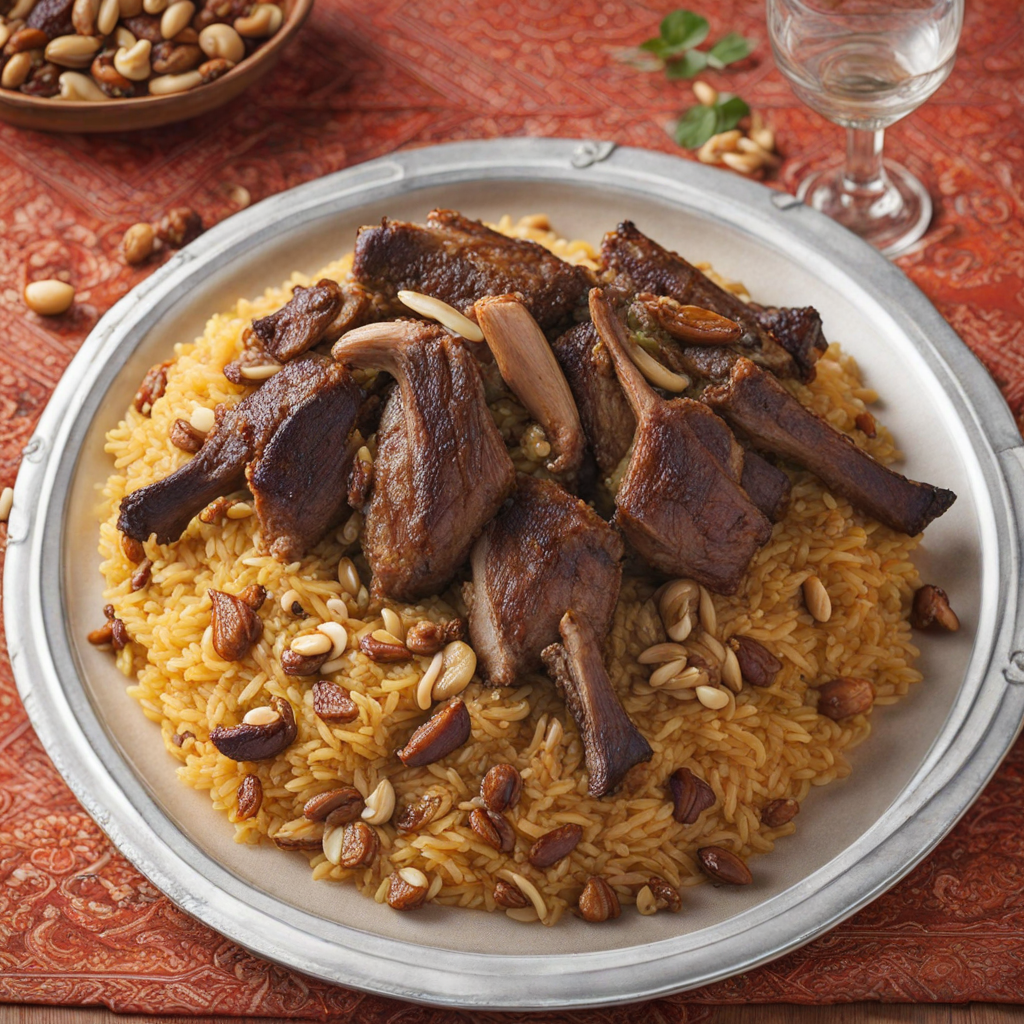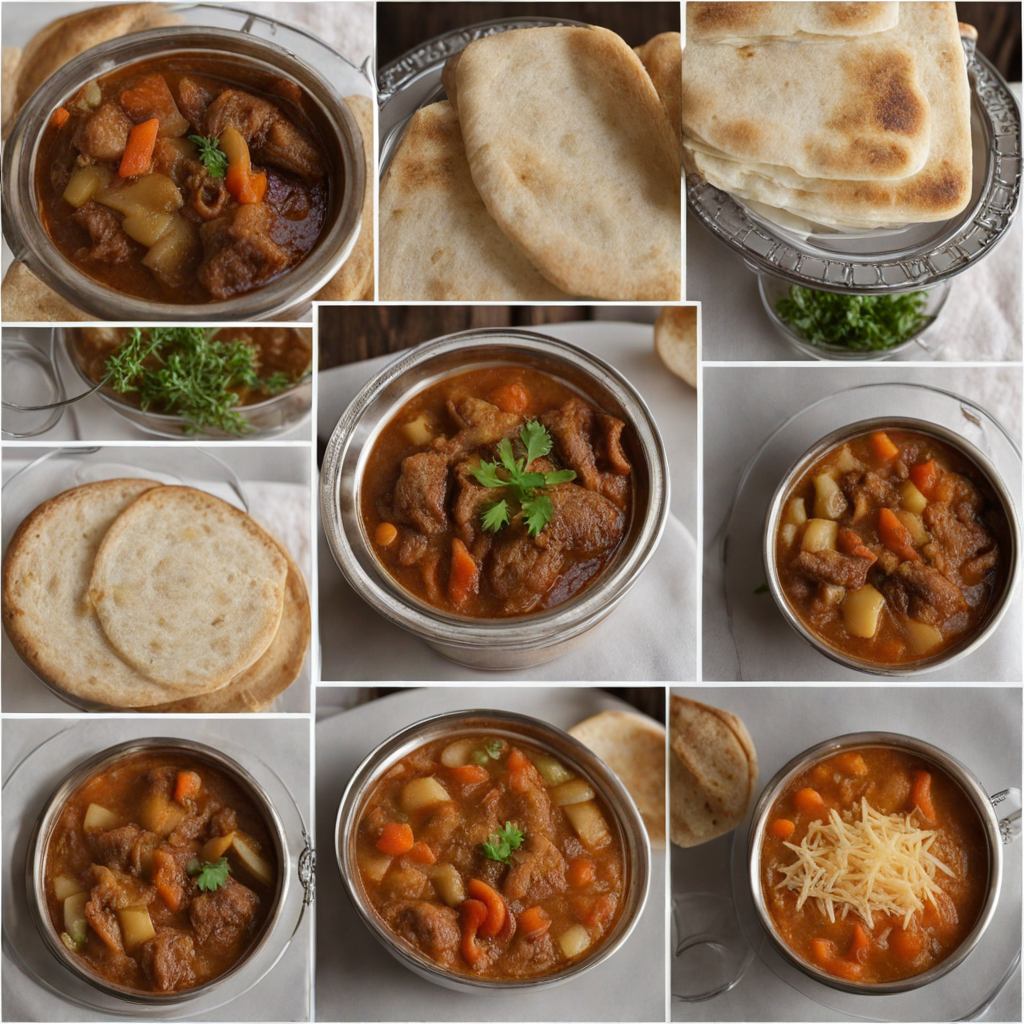Regag bread
Regag bread is a traditional Emirati flatbread that boasts a unique texture and flavor, making it a delightful addition to the culinary landscape of the United Arab Emirates. This thin, crispy bread is made from a simple mixture of flour, water, and salt, which is then kneaded into a smooth dough. The dough is rolled out into large, thin rounds and cooked on a hot griddle or stone, giving it a distinctively crisp exterior while retaining a soft, slightly chewy interior. The cooking process creates a beautifully charred surface that adds a smoky aroma, enhancing its overall appeal. What sets Regag bread apart is its versatility; it can be enjoyed in various ways. Traditionally, it is served alongside savory dishes such as grilled meats, stews, or dips, allowing it to soak up the rich flavors of the meal. Additionally, it's often enjoyed as a breakfast item, paired with items like cheese, honey, or za'atar, a fragrant blend of herbs and spices. This adaptability makes it a staple in Emirati households, where it is a common feature at both casual meals and festive gatherings. The experience of eating Regag bread goes beyond just its taste; it’s about the communal aspect of sharing food. Often, families and friends gather around a large platter of food, tearing off pieces of the bread to scoop up different dishes. This not only enhances the flavor but also fosters a sense of togetherness. The simplicity of its ingredients combined with the depth of flavor it brings to the table makes Regag bread a must-try for anyone looking to explore the rich culinary traditions of the United Arab Emirates.
How It Became This Dish
The History of رقاق (Ruqaq) in the United Arab Emirates #### Origins and Early Beginnings Ruqaq, a traditional Emirati food item, has its roots deeply embedded in the rich tapestry of the Arabian Peninsula's culinary heritage. While the exact origins of ruqaq are somewhat obscure, it is believed to have been inspired by the ancient practices of bread-making that were prevalent in the region for centuries. The term "ruqaq" refers to a thin flatbread, often characterized by its delicate texture and versatility. The earliest forms of flatbreads can be traced back to the ancient civilizations of Mesopotamia, where grains were milled, mixed with water, and baked on hot stones. As trade routes expanded, the techniques of bread-making spread across the Arabian Peninsula, shaping the culinary landscape. The introduction of wheat and barley into the diet of nomadic tribes played a crucial role in the development of ruqaq, as these grains became staples due to their availability and ease of storage. #### Cultural Significance Ruqaq is not merely a food item; it embodies a cultural narrative that reflects the lifestyle and traditions of the Emirati people. Historically, bread has been a symbol of sustenance, hospitality, and community. In the context of Emirati culture, ruqaq holds a special place, often being served during gatherings, celebrations, and significant events, such as weddings and Eid festivities. The preparation of ruqaq is often a communal activity, with families coming together to knead the dough, roll it out, and cook it on a traditional griddle known as a “tannour.” This collective effort symbolizes unity and shared heritage, reinforcing ties among family members and the community. The ritual of making ruqaq also serves as a means of passing down culinary knowledge from one generation to the next, ensuring that the tradition is preserved and appreciated by future generations. #### Development Over Time As the United Arab Emirates evolved economically and socially, so too did the preparation and consumption of ruqaq. In the early days, ruqaq was made primarily from whole wheat flour, which was ground using traditional stone mills. The dough was often mixed with water and salt, resulting in a simple yet wholesome bread that accompanied various dishes. With the discovery of oil in the mid-20th century and the subsequent modernization of the UAE, food production and consumption patterns began to change dramatically. The introduction of commercial flour and pre-packaged ingredients altered the authentic methods of making ruqaq, leading to a more standardized product in many households. Despite these changes, many Emirati families continue to uphold traditional recipes, emphasizing the importance of authenticity in their culinary practices. In recent years, ruqaq has gained recognition beyond the borders of the UAE, becoming a symbol of Emirati cuisine. Chefs and food enthusiasts are increasingly incorporating ruqaq into modern dishes, experimenting with flavors and pairings that reflect both traditional and contemporary influences. For instance, ruqaq is often enjoyed with various dips such as hummus or baba ghanoush, or served alongside traditional Emirati dishes like shawarma and grilled meats. #### Ruqaq in Contemporary Cuisine Today, ruqaq remains a beloved staple in Emirati households, often served for breakfast, lunch, or dinner. Its versatility allows it to be enjoyed in myriad ways. One popular method of serving ruqaq is to fill it with ingredients such as spiced lamb, chicken, or vegetables, creating a delicious wrap that is both satisfying and easy to eat. In contemporary Emirati cuisine, chefs are reimagining ruqaq in innovative ways. Some have started incorporating international flavors and ingredients, such as cheese, or infusing the dough with spices like za’atar or saffron. Food festivals and culinary competitions have further popularized ruqaq, showcasing its adaptability and significance in the ever-evolving food scene of the UAE. Moreover, the increasing awareness of food heritage has led to a resurgence of interest in traditional cooking methods. Workshops and culinary classes focusing on the art of making ruqaq are becoming common, as both locals and expatriates seek to connect with Emirati culture through its food. This growing interest in authenticity and tradition reflects a broader global movement towards appreciating regional cuisines and their stories. #### Ruqaq and the Future Looking ahead, the future of ruqaq is promising as it continues to evolve while maintaining its cultural significance. The UAE's dynamic culinary landscape, influenced by its diverse population, is likely to result in new interpretations of this traditional flatbread. As chefs experiment with fusion cuisine, ruqaq may find itself incorporated into a variety of dishes that reflect the multicultural nature of Emirati society. Furthermore, as the UAE places greater emphasis on sustainable practices in food production and consumption, traditional methods of making ruqaq may gain renewed appreciation. The use of locally sourced ingredients, organic flours, and traditional cooking techniques could enhance the authenticity and flavor of ruqaq, attracting food lovers who prioritize sustainability. In conclusion, ruqaq is more than just a flatbread; it is a symbol of the rich cultural heritage of the United Arab Emirates. From its ancient origins to its contemporary interpretations, ruqaq serves as a reminder of the importance of food in fostering community, preserving traditions, and embracing innovation. As the world continues to discover the diverse flavors of Emirati cuisine, ruqaq will undoubtedly remain a cherished staple, bridging the past and the future in every delicious bite.
You may like
Discover local flavors from United Arab Emirates


